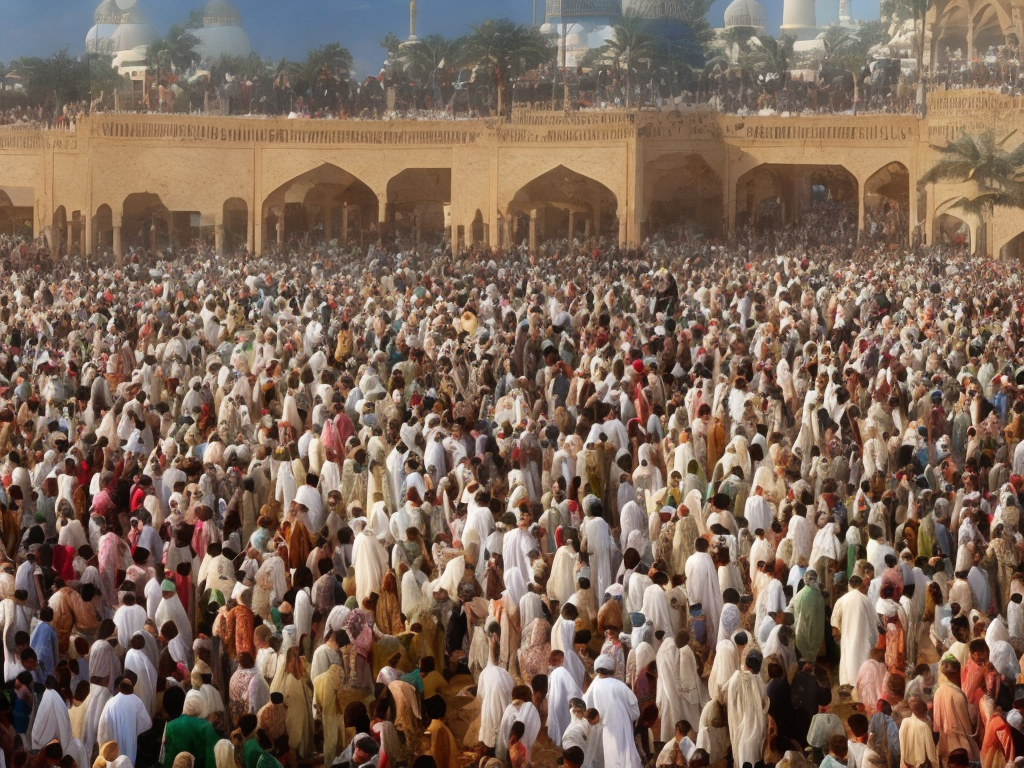
Eid is an important festival celebrated by Muslims all over the world. There are two main Eid celebrations in Islam – Eid al-Fitr and Eid al-Adha. While both festivals hold great significance for Muslims, they are celebrated for different reasons and have distinct rituals associated with them. In this article, we will explore the difference between Eid al-Fitr and Eid al-Adha.
Eid al-Fitr, also known as the "Festival of Breaking the Fast," marks the end of Ramadan, the holy month of fasting for Muslims. It is celebrated on the first day of Shawwal, the tenth month of the Islamic calendar. This festival is a time of joy, gratitude, and giving. Muslims gather for communal prayers early in the morning, wearing their finest clothes. The prayers are usually held in open spaces, such as mosques or large grounds, allowing the community to come together.
After the prayers, Muslims visit their relatives, friends, and neighbors to exchange greetings and wish each other "Eid Mubarak," which means "Blessed Eid." This is followed by feasting on delicious meals, giving gifts to children, and distributing sweets among neighbors and the less fortunate. It is a day of celebration and happiness, with families coming together to enjoy each other's company and strengthen their bonds.
Charity plays a significant role during Eid al-Fitr. It is obligatory for every Muslim to give alms, known as Zakat al-Fitr, to the less fortunate before the Eid prayer. This helps ensure that everyone in the community has the means to celebrate and enjoy the festivities. Additionally, Muslims are encouraged to give extra donations during this time to help those in need.
Another important aspect of Eid al-Fitr is the special prayer called "Salat al-Eid." This prayer is performed by a congregation and is led by an Imam. It consists of a sermon followed by two units of prayer. The sermon focuses on the significance of Ramadan, the blessings received during the month, and the importance of showing gratitude for these blessings.
On the other hand, Eid al-Adha, also known as the "Festival of Sacrifice," is celebrated on the tenth day of Dhu al-Hijjah, the twelfth month of the Islamic calendar. This Eid commemorates the willingness of Prophet Ibrahim (Abraham) to sacrifice his son, Ismail (Ishmael), as an act of obedience to God. Just as Ibrahim was about to carry out the sacrifice, God intervened and provided a ram to be sacrificed in the place of Ismail. This event symbolizes the willingness to sacrifice one's most beloved possessions for the sake of God.
Eid al-Adha is celebrated to honor Ibrahim's act of submission and to remind Muslims of his unwavering faith. It serves as a reminder of the importance of sacrificing one's desires and ego for the greater good. This festival is also known for its emphasis on charity and sharing. Muslims are encouraged to distribute meat from the sacrificial animal among the less fortunate, symbolizing unity and compassion. Many Muslims also perform the Hajj pilgrimage to Mecca during this time, following the footsteps of Prophet Ibrahim.
The main ritual of Eid al-Adha is the sacrifice of an animal, typically a sheep, goat, cow, or camel, in remembrance of Ibrahim's willingness to sacrifice his own son. This sacrifice is done following specific guidelines and is performed on the morning of Eid. The meat from the sacrificed animal is divided into three parts – one part is kept for the family, one part is given to relatives and friends, and the remaining part is donated to the needy. This act symbolizes sharing and taking care of those less fortunate than oneself.
Just like Eid al-Fitr, Eid al-Adha also involves communal prayers called "Salat al-Eid." These prayers are performed in congregation, with Muslims gathering in mosques or open grounds. The prayers are led by an Imam and are followed by a sermon that emphasizes the themes of sacrifice, faith, and unity. Muslims also exchange greetings and visit loved ones during this festival.
In conclusion, although both Eid al-Fitr and Eid al-Adha are important festivals in Islam, they differ in their significance and rituals. Eid al-Fitr marks the end of the holy month of Ramadan, focusing on gratitude, giving, and the joy of breaking the fast. On the other hand, Eid al-Adha commemorates Prophet Ibrahim's willingness to sacrifice his son, emphasizing sacrifice, obedience, and the importance of sharing with the less fortunate. By understanding these differences, we can appreciate the unique essence of each festival and celebrate them with greater understanding and respect.
 Self-Instruct
Self-Instruct